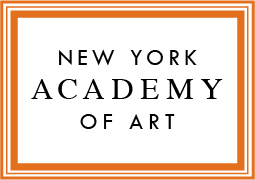Emily Davis Adams (MFA 2011, Fellow 2012) just completed the “Dumfries House Residency,” at Dumfries House, in Scotland. Dumfries House was built between 1754-1759 for the 5thEarl of Dumfries, and is set on 2,000 acres of land in East Ayrshire, Scotland (about an hour’s train ride South of Glasgow). The estate’s principal rooms and their contents have remained almost completely intact for 250 years, leading to a description of Dumfries House as “an 18th century time-capsule.”
The residency is awarded to a very select group of artists by the Royal Drawing School in London, and its international partners (including the New York Academy of Art). It provides a private studio and accommodation on the Dumfries House estate for up to four artists at a time. It is a unique opportunity for artists who use drawing in their practice, and emphasizes working from observation and the development of new work.
Below, Emily talks about her experience at Dumfries House, and the evolution of her work since the Academy.
Can you describe the setting?
The region is a combination of pastureland (lots of cows and sheep), forested areas and small towns. The estate had been abandoned for a long time, but Prince Charles recently took on its restoration and revival, and it has recently re-opened to the public. There is still quite a lot of work being done – for example, I watched a large maze being built in the earth near my studio building. The buildings are all relatively close together, but the rest of the estate spans several hundred acres of small paths, through gardens and forests and streams. It’s such a lush environment, I felt like I grew extra green receptors in my eyes!
 |
| A Path on the Estate |
How did the setting influence your work during the residency?
The green was infectious, which caused a bit of confusion at first – I’ve basically been working in an expanded grey scale for coming on two years now. But it was a welcome change. I had made several rules for myself to abide by during my stay in order to both stay focused and use the time to experiment with my studio practice. One of them was to work from life. So for a while my studio was filled with pieces of moss and lichen covered branches and stones. I brought every green in my arsenal of paints, and my viridian and hooker’s green were no longer extant by the third week. I did a lot of painting outside, which was definitely a change from my norm. I fell in love with a stump, and made a lot of quick watercolors of it. It was uprooted, on its side, sawed off—really pathetic—but with life just springing from its every orifice. Ferns, moss in every shape and green, mushrooms, you name it. I took a lot of photos in addition to my sketches and have plans for a big painting at some point in the future. I spent the final week returning to my grey scale, but with a new perspective.
 |
| Close-up of Emily’s Palette |
The residency is geared toward “drawing based” work – can you describe how you use drawing in your painting practice?
I guess I’m not always entirely sure where the line is, pardon the pun, between drawing and painting. Most of my work these days has been on paper, typically watercolor and/or gouache, and I use graphite pencil for sketches when I’m trying to work out a composition or idea.
How has your work progressed since your NYAA postgraduate fellowship?
 |
| “Buttonwillow” – from Emily’s NYAA years |
 |
| Moss Covered Specimens in Emily’s Studio |
During the fellowship my paintings were mostly boiled down interpretations of places I’d been or lived in, like views from the highways of California, or the brick wall and roof outside my window in Brooklyn. They were all in oil and using the conventions of landscape by showing both sky and ground, with an actual or implied horizon line. Since the fellowship, I’ve started working a lot on paper, and started looking downward at my subject matter, getting rid of the horizon line and dealing with a more overwhelming space that doesn’t really let you out and doesn’t give you the relief of vast receding distance. I felt like the blue skies and atmospheric perspective were too easy, too pleasing, and I was trying to get at something more challenging. I’ve been working a lot with surfaces that have a human history in them (or on them), like sidewalksand studio floors. Most of the subjects have been flat, but I’ve also made paintings of objects from the ground—that also have a human story—like a piece of trinitite from the atomic bomb test site, and the boulder from the artist Michael Heizer’s work, ‘Levitated Mass’. My newest big project has to do with footprints left on a clay tennis court after my partner and I played a game. I’m terrible at tennis, by the way, but I thought the record of the game on the ground was good stuff for a painting.
 |
| View from the Studio Window
### |
